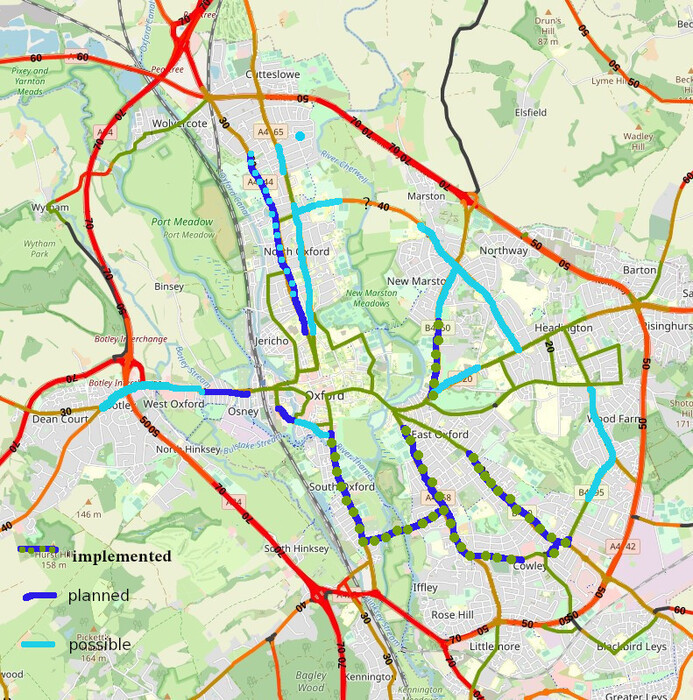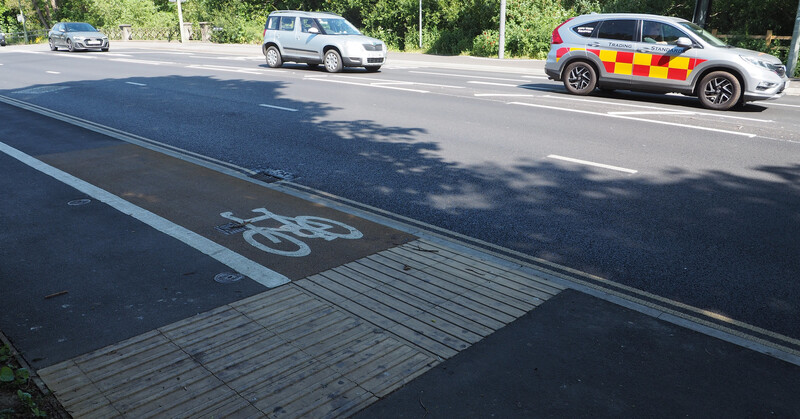making Oxford 20mph
Oxfordshire is introducing 20mph on many main roads, on rural roads where they pass through villages and on larger sections of Oxford's main roads. Here I look at what is happening - and should be happening - in Oxford.

Oxfordshire is introducing 20mph on many main roads, on rural roads where they pass through villages and on larger sections of Oxford's main roads. Here I look at what is happening - and should be happening - in Oxford.

The designs proposed for Woodstock Rd will be a huge improvement for walking and cycling.

The cycling provision will be taken off pavements, allowing for 2 metre wide footways. At some minor side entries there will be fully continuous pavements giving people walking unquestionable priority. Turning radii at side entries will be tightened, shortening crossing distances and slowing motor traffic. And five additional signalled crossings are planned.
If this scheme goes ahead as designed, Woodstock Rd will have the best cycling provision on any Oxford arterial route. It is not clear from the plans, but if I understand rightly the scheme involves stepped cycle tracks. These will be 2.2m wide for most of the route, will have clear priority over side entries, and will bypass bus stops, avoiding forced rejoins with the carriageway. The fundamental change is that cycling is now neither on the carriageway nor on the pavement, but given full recognition in its own right.
It's not perfect. Due to space limitations, there are places where the pavement is under 2m wide — 1.8m at the narrowest — and there's a fairly long stretch where the cycle track is only 1.7m wide. (The pavements have been prioritised here, only dropping below 2m when necessary to stop cycle tracks being narrower than 1.7m.) There are also a few "shared space" sections, due to constrained space around bus stops, to support less confident people cycling across Woodstock Rd, and (probably) to avoid having to remove trees. more
I was pretty critical of the plans for the Botley Rd rebuild, but at least for cycling the results from the first works to be completed seem even worse than I had feared.

The cycle lanes/tracks are too narrow - in places even narrower than the inadequate 1.5m that was promised. This is aggravated by the use of unforgiving full-height kerbing to the carriageway, which prevents easy overtaking and creates a serious hazard if something forces a swerve. The cycle tracks are often directly adjacent to narrow 3 metre motor traffic lanes carrying 30mph traffic — a pedestrian suddenly stepping into the cycle track, debris, or anything else, and someone cycling might be straight under a car or bus. And the cycle tracks lack consistent priority over side entrances and are not flat, going up and down over driveway entrances (where keeping very occasional vehicle movements smooth has been prioritised). more